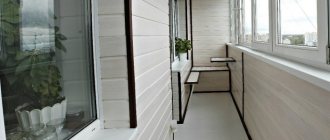How to convert a residential building into an apartment building
We did the land surveying.
Now the tax comes only to us for the entire 18 acres on which the house and the land adjacent to it stands. And what should we do with all this “wealth”? We don’t know? And what is a simple way to remove self-development? This procedure entails the removal of the apartment from the balance sheet of the administration, and it is unknown whether we will register part of the residential building. If we privatize an apartment now, will it be possible to “redo” the documents for part of the residential building later?” In accordance with Art.
How to Change the Status of a Residential Building
For a “residential building”, compliance with these requirements is not mandatory. However, the practical meaning of this distinction tends to zero, since: - there is no indication that a residential building can only be unsuitable for permanent residence.
At the same time, no distinctions have been made between a “residential building” (according to the Federal Law “On Gardening, Gardening and Dacha Non-Profit Associations of Citizens”) or an “Individual Housing Construction Object” under the Town Planning Code on the one hand, and a “residential building” on the other. However, no definition has been established at all for a “residential building”[2].
12 Jun 2021 uristlaw 907
Share this post
- Related Posts
- Have the amendments to Article 228 of the Criminal Code of the Russian Federation come into force?
- Just for Veterans of Military Service in the Belgorod Region
- In Tatarstan, If Mom Is Not 25, She Is Entitled 50,000 For Her First-born
- How to Receive a State Award of the Russian Federation in the Caucasus
Transfer of an individual residential building to an apartment building
3 of the Housing Code of the Russian Federation (hereinafter referred to as the Housing Code), which has higher legal force in relation to the regulatory legal acts of the constituent entities of the Russian Federation, including when regulating issues falling under the joint jurisdiction of the Russian Federation and its constituent entities.subjects of the Russian Federation in the field of housing relations and local government bodies in the field of housing relations are not fixed. According to Part.
The essence of the problem is that since 2021, small construction companies operating according to the same scheme have begun to appear in different cities of Russia like mushrooms after rain. The developer acquires ownership of a land plot intended for individual housing construction (IHC), develops a project and begins to sell shares in the future home ownership.
How to Change the Status of a Residential Building
10. The exercise of the right to re-register the title depends on the will of all co-owners. In accordance with the norms of clause 9.1 of Art. 3 of the Federal Law “On the entry into force of the Land Code of the Russian Federation” and Art. 36 of the Land Code of the Russian Federation, in the procedure for re-registration of title, ownership arises only if all persons who own a land plot with the right of use express their intention to re-register the title of permanent (perpetual) use or lifelong inheritable possession with the right of ownership. To properly consider the case, the courts must take into account that the absence of the will of one of the co-owners of the house to acquire ownership of the land makes it impossible to satisfy the claim. Analysis of legal norms clause 9.1 art. 3 of the Federal Law “On the entry into force of the Land Code of the Russian Federation”, paragraph 3 of Art. 28 “On gardening, market gardening and dacha non-profit associations of citizens”, Art. 25.2 of the Federal Law “On State Registration of Rights to Real Estate and Transactions with It” allows us to come to the conclusion that in the process of re-registration only the title of ownership changes without changing the size of the plot and the number of legal entities, as well as existing encumbrances. In the event that an individual residential building belongs to several persons by right of ownership, the right of permanent (indefinite) use, by virtue of Art. 35 of the Land Code of the Russian Federation and other norms, belongs to all these persons. The exercise of the right to re-register title in this case depends on their common will. This rule follows from the principle of the unity of fate of a land plot and objects firmly associated with it (Article 1 of the Land Code of the Russian Federation). The right of one of the co-owners of the building to re-register the title cannot be exercised independently, since the law does not allow the rest of the co-owners to forcibly grant ownership of the land plot. The will of one of the co-owners in this case is not enough to create ownership rights through a simplified re-registration of title. Accordingly, when considering a claim for recognition of ownership of a land plot, the court must identify all the owners of the building located on the disputed land plot and involve them in participation in the case to clarify their will. The court is not allowed to recognize the ownership right of one of the co-owners of a residential building, since in this case the court actually divides the land plot (if the plaintiff is recognized as the right of sole ownership) or forcibly vests the remaining co-owners of the house with the right of ownership of the land plot (if the plaintiff is recognized as having the right to share in ownership). Thus, by the decision of the Ordzhonikidze District Court of Yekaterinburg, on the claim of G. for recognition of the ownership rights of the plaintiff, ownership of a land plot with an area of 370 square meters was recognized. m, located within the boundaries of the plot ¼ share of a residential building. It is not clear from the operative part of the decision whether the court recognized the plaintiff’s right of sole ownership of the land plot or common shared ownership, determining G.’s share in the right in the amount of ¼.
This is interesting: Land tax for labor veterans in Vladivostok
Thus, the Venevsky District Court of the Tula Region considered the case on the claim of Andreeva A.N., acting in the interests of the minor Andreeva P.V., against the administration of the municipal formation Venevsky District, Andreichenko L.A., Tudachkova T.S., Kocherov A.S. on recognition of ownership of a land plot with cadastral number 71:05:030302:407, location: Tula region, Venev, st. Stroitelnaya, 9. classified as land - land of settlements, with permitted use - for the operation and maintenance of part of an individual residential building, with an area of -1262 +/- 12 sq.m., in accordance with the procedure of privatization.
How to carry out the procedure for transferring a residential building to an apartment building or a hotel
In accordance with clause 6 of the Regulations on recognizing premises as residential premises, residential premises unsuitable for habitation and an apartment building as unsafe and subject to demolition or reconstruction, approved by Decree of the Government of the Russian Federation of January 28, 2021 N 47, an apartment building is recognized as a set of two or more apartments having independent exits either to a plot of land adjacent to a residential building or to common areas in such a building. An apartment building contains elements of common property of the owners of premises in such a building in accordance with housing legislation.
If I built a residential building on a site for individual housing construction (initially, assuming a transfer, I made the appropriate layout) and after that, changing the purpose of the site, I want to make the house an apartment building and sell it apartment by apartment. What is the procedure for this magic? And what will change if I want to convert it to a hotel? (everything is clear about the site, that it must fall into the desired zone, etc. question about buildings.)
Rights of owners of residential and non-residential premises of an apartment building
- the room should be located on the ground floor (if it is higher, then all areas below it should also be non-residential);
- it must have a separate entrance;
- and should not violate the overall architectural appearance of the building (Article 22 of the Housing Code of the Russian Federation).
Non-residential premises are parts of an apartment building, and their owners are participants in the common shared ownership of the common property of this building. We have already talked about the fact that the owners of premises in an apartment building own, use and dispose of common property in proportion to their share in it. Let us recall that common property includes landings and stairs, elevators, corridors, attics, basements, as well as the land adjacent to the house - the local area.
Conversion of a residential building into an apartment building
Hello, please tell me what is the best way to proceed. A house for 4 owners with a separate entrance and gas and electricity supply, stands on land leased from the state. There was land delineation, but the tax only comes to our apartment. In order for the land tax to come to all owners, the house needs to be converted into an apartment building. The question is this: we have self-development in the form of an extension to the house. And a separate garage and a bathroom. What is the best thing to do, first remove the squatters, and then convert the house into an apartment building or vice versa. And how to remove self-building?
We recommend reading: New benefits for Chernobyl victims, changes to the law
The tax office sent us to the cadastral chamber, and there they told us to change the status of the house. In the BTI we are listed as a private house. And our address has a house number and an apartment number. So they can’t sort out our house or apartment... We did the land surveying, so the tax comes only to us for the entire 18 acres on which the house and the land adjacent to it stand. And what should we do with all this “wealth”? We don’t know? What is a simple way to remove self-building?
Transfer of individual housing construction to an apartment building
Two weeks are given to send the act to the applicant’s postal address. The document is sent by registered mail, and the two-week period begins to run from the moment the act is issued. Five days are given to send a copy to the cadastral authorities. Based on the decision made, the necessary changes will be made to the relevant registers. From this moment, within seven days, the applicant is informed that the type of permitted use has been transferred from individual housing construction to an apartment building.
Transfer of individual housing construction to an apartment building is one of the activities of our company. Our land lawyers will change the type of permitted use of your land plot to MKD: they will collect the necessary documents, prepare them correctly and go through the entire licensing procedure before making changes to the Unified State Register. Our specialists will coordinate your wishes with the general plan, zoning of the territory, local land use and development rules, and obtain the necessary expert opinions.
How to convert an apartment building into non-residential premises
Based on the decision of the head of the administration, the applicant is issued either permission to change the VRI or a justified refusal to do so. It is worth considering that a change in the VRI can directly affect the cadastral value of this site. The local government body is obliged to send information about changes in the VRI to the rights registration authority so that appropriate changes are made to the Unified State Register of Real Estate (Article 32 of Federal Law No. 218). These changes are registered within 15 working days, after which the interested person (copyright holder) must be notified about this within 5 working days.
Papers are reviewed over a period of one and a half months. In case of a positive decision, the applicant receives an act with a decision, on the basis of which he must change the status of the premises within three days. Next, an application is sent to the BTI to clarify the cost of the transfer procedure. After receiving the response, the applicant pays the specified amount and applies to Rosreestr to register ownership of the property, which is in a new status.
Blocked residential buildings are
If your home meets the requirements established by regulatory documents, you can register it as a block house. To do this, you will have to submit an application to the BTI authorities, the local administration, and judicial investigation authorities that are involved in considering cases for awarding status to residential buildings, and wait for its consideration.
Houses of blocked development are dwellings that cannot be passed on by inheritance in their entirety. The heir, in a certain order, receives the right of ownership of a separate section of the block structure. This property transfer scheme does not violate the property rights and possession of neighbors living in the same block.
Transfer of a residential building to an apartment building 2021
When it officially became possible to manage an apartment building directly by the owners, residents began to change the form of management. Indeed, at first glance, self-government has many advantages and seems to be the most effective method. But in fact, it turned out that direct management of an apartment building has pitfalls that many people whose houses switched to this type of management had to face.
It is important to note: they cannot require any other documents from above. The entire package is handed over against receipt. The following video will tell you in more detail about when a transfer from non-residential to residential may be needed and about the procedure: Notifying the owner You will have to wait 45 days. As a result, you will receive a special notification form about the transfer of non-residential premises to residential premises.
We recommend reading: Can bailiffs seize a spouse’s monetary contribution?
Transfer of a non-residential building to an apartment building
For approval, a protocol of the general meeting of residents with a list of participating owners and the decision made is required. At the same time, in Article 23 of the Housing Code of the Russian Federation, which mentions the grounds for refusing a transfer, the lack of consent of the residents is not indicated as a sufficient reason. In some cases, consent is not required in principle. But authorities often refuse reconstruction precisely because of the disagreement of the residents of the house.
In the case where the residential building is multi-apartment, the owner must obtain the consent of all participants in shared ownership in the apartment building before applying to the local government for permission to transfer it to a non-residential property. When the use of a house as a non-residential facility requires its reconstruction, redevelopment, or other work, the applicant must develop and agree on a project for such reconstruction or redevelopment and justify the need for certain works.
How to transfer an apartment:
Conversion of an apartment into a residential building (part of it) is not provided for by law. But in practice the process occurs. In almost all cases, you will have to act through the courts, since the Moscow Region administration issues a refusal. You cannot do without a trial even if the owner has everything in order with the documents. Thus, both administrative and judicial procedures will have to be observed.
To a residential building
The applicant has the right to transfer the apartment to a residential building if all premises in the building are registered as his property. For example, both living spaces in a semi-detached house. In fact, the owner owns the entire house. But in practice this is not the case, since the documents of the BTI and Rosreestr indicate “low-rise or multi-apartment residential building.” To translate, you need to change this entry to “blocked residential building.” Read on to find out how to do this.
Where to contact?
They begin changing the status of an apartment with a request to the architecture department of the local administration. In almost all cases, redevelopment of the premises is necessary. The catch is that the architecture department does not approve the redevelopment. The services issue a refusal with the note “apartment building”. Hence the logical solution is to address the issue to the local court.
Step-by-step algorithm
Here are instructions on how to convert premises in a semi-detached building into a residential building:
- Agree with the neighbor - the owner of the second apartment (in case the housing is not yet in the status of a residential building). Both owners need to submit a joint application to the administration.
- Order an urban planning examination (for example, by inviting experts from the BTI). The specialist determines whether the owners’ residential premises meet the status of a private home. The expert will mark the external points and issue a technical report. You also need to check if there are any errors in urban planning regulations.
- Third, prepare documents:
- application for transfer of an apartment to a residential building - it is drawn up and signed on the spot (following the sample);
- originals of title documents for apartments (for example, an agreement on privatization, exchange, purchase and sale);
- technical plan of a residential premises or technical passport from the BTI;
- floor plan of a two-apartment residential building;
- a ready-made reconstruction or redevelopment project is not always required, since housing may initially meet the standards.
The list of documents is approximate. The final option depends on the region where the house is located.
- Receive a decision from the municipal administration - positive or negative (with a reason).
The further course of the procedure depends on the verdict of the mayor's office. Most likely they will refuse - then you will have to defend the case through the court (paragraph 7 of article 132 of the Code of Civil Procedure of the Russian Federation).
- Go to court with a statement of claim.
- Receive a court decision in the form of an extract from the decision.
- Contact Rosreestr again and make changes.
Get ready to go to court. The percentage of positive decisions from the administration is low.
Conversion of an apartment building into an individual residential building
At the same time, the land plots under the house (there are two of them) are privatized into the shared ownership of specific citizens (apartment owners), and not of certain owners of the premises. The type of permitted use of land plots for personal subsidiary farming, and not the operation of an apartment building.
In the district administration and the chief architect, there is an opinion that the rural administration should issue a decree on “changing the type of building”, on the basis of this decree, make a technical plan, based on the technical plan, make changes to the cadastre, receive a cadastral passport there, take it to the Federal Reserve System and receive certificate for shares in an individual residential building.
Change of home status
Moreover, in the cadastral passport the type of permitted use of the land is recorded as “for the construction of multi-storey apartment buildings.” Because of this line, in the cadastral register our house is also written “apartment building”. And because of this line, they refuse to change the word “apartment” in certificates of ownership. And because of this word, the administration refuses to issue certificates of family composition, since the apartments are managed by the management company, and the administration issues certificates only to private owners whose certificates say “share”, “house” or “part of the house”.
From the submitted certificates of ownership for apartments 1, 2, 3, houses No. ... on the street. ...., and the presented floor plan of the technical passport prepared by the Municipal Unitary Enterprise "City Bureau of Technical Inventory" on 06/02/2020 it follows that the residential building in question consists of three apartments.
This is interesting: Documents for obtaining a subsidy for a pensioner for the education of children
How to convert a residential building into an apartment building
Clause 3 art. 28 of the Federal Law on Privatization does not allow refusal of citizens to purchase land, except in cases specified by law. Lands that are of particular importance to the interests and security of the state are not subject to privatization. There is another option - to allow the department to conduct raids on facilities.
But recently, the first floor in new buildings has begun to be made non-residential - social facilities (kindergarten, clinic), commercial premises (shop, pharmacy, cafe, dry cleaner, office), garages. Pros: – convenience. For older people and people with disabilities, for young mothers with small children.
How to Transfer a Mkd to a Private House
In accordance with Art. 1 of the Law of the Russian Federation dated 04.07.1991 N 1541-1 “On the privatization of housing stock in the Russian Federation” privatization of residential premises is the free transfer into the ownership of citizens of the Russian Federation on a voluntary basis of residential premises occupied by them in the state and municipal housing stock.
Thus, from the above it follows that your apartment does not meet the characteristics of a multi-apartment residential building, and the residential premises belonging to you, in accordance with subparagraph 1 of paragraph 1 of Article 16 of the Housing Code of the Russian Federation, is part of a residential building, since there are no premises in your house common use.
Transfer of an individual housing construction site into an apartment building and low-rise construction
After receiving the specified application, the local administration makes a request for information about the applicant, which is contained in the Unified State Register of Legal Entities or the Unified State Register of Individual Entrepreneurs. For this purpose, a unified system of interdepartmental electronic interaction of the federal executive body is used, which carries out state registration of legal entities and individuals as individual entrepreneurs. An individual or legal entity has the right to provide this information independently.
The decision to change the temporary residence permit to an apartment building or multi-apartment housing complex is made by the head of the local administration (Part 1, Article 4 N 191-FZ). However, it is worth considering that if the purpose of the site changes, then a public hearing will need to be held before making a decision. Otherwise, there is no need to carry them out. It is to the local administration that the appropriate package of documents must be submitted.
How to convert a non-residential building into an apartment building
The issue of redevelopment of non-residential premises, which are transferred to a residential apartment, is relevant in almost one hundred percent of cases. Shops and offices have their own internal space divided, not at all as required by the standards for residential premises. Therefore, first you need to resolve the issue of reconstruction (through design organizations or through approval of the sketch). It is important not to forget that in high-rise buildings, reconstruction often affects neighboring apartments, especially if we are talking about premises on the ground floor, so before starting any work you need to obtain the consent of the neighbors at a general meeting of owners. To approve a project or sketch, you will need minutes of the meeting, to which you should attach a registration sheet for those participating in the meeting, a complete list of owners, and their consent to the reconstruction. In Moscow, this can be done directly through the City Property Department, as well as through a multifunctional center or public services portal by submitting an electronic application. In other regions and cities, documents can be accepted by housing policy departments, property relations committees, that is, bodies responsible for the housing stock. The service is free (unlike redevelopment of the premises, which can cost, taking into account the preparation of the project, technical and cadastral passports, about ten thousand rubles or more).
We recommend reading: Minimum Cost of Living for a Pensioner in St. Petersburg From March 1, 2021
Deadlines - within 48 days (45 days plus three). If the transfer of the premises is agreed upon, you will be given a decision to transfer the non-residential premises to residential ones. In case of refusal, the decision can be appealed within 3 months in court from the moment the owner became aware of the violation of his legal rights. It should be understood that performing the translation process independently in difficult situations (the room has some peculiarities, reconstruction is needed, etc.) will require a lot of time and effort.
Transfer of residential premises to non-residential premises in an apartment building
Not every property in an apartment building will be allowed to be transferred to non-residential stock, and not every citizen who wishes to do so will be allowed to do so. Difficulties may arise when preparing documents and in relationships with neighbors, which is also worth considering.
First, the owner needs to invite specialists to conduct an examination, as a result of which a report will be issued on the condition of the structure of the apartment building and the technical characteristics of the apartment. It is also indicated whether redevelopment is possible and whether it will not lead to destruction of the supporting structure.
Rights of owners of residential and non-residential premises of an apartment building
In particular, he has the right to participate in a general meeting at which the most important issues relating to common property are discussed. For example, its reconstruction or reconstruction, as well as the disposal of the local area. This could be a solution to the problems of unauthorized parking near shops located in apartment buildings.
Shops, hairdressers, pharmacies and other commercial organizations in apartment buildings are now not uncommon. It is more profitable and easier for entrepreneurs to buy an apartment and convert it into an office than to find a special premises with an acceptable rent or an inexpensive plot of land for construction. But for residents, such a “neighborhood” often results in inconvenience. For example, refrigerators, air conditioners and other equipment operate around the clock, and are very loud. The most common violation is unauthorized parking. After all, a person parking next to a store located in a residential building does not have the idea that he is actually leaving the car on someone’s property.
This is interesting: Administration of the City of Akhtubinsk Assistance Program for Young Families
Transfer of an Apartment Building to an Individual Residential Building
The concept of an apartment building is enshrined in paragraph 6 of the “Regulations on the recognition of premises as residential premises, residential premises unsuitable for habitation and an apartment building as unsafe and subject to demolition or reconstruction,” approved by Decree of the Government of the Russian Federation of January 28, 2021 No. 47.
Most likely, few people will agree to this option, because... a citizen will pay a sum of money equal to the cost of a separate apartment, but in the end will receive only a share in the common property and a restriction of rights. You can go to court to recognize the constructed building as an apartment building.
Requirements for residential premises
The Regulations on recognizing premises as residential contain the following requirements:
- The premises must be located in houses in a residential area, in accordance with the functional zoning of the territory;
- Enclosing and load-bearing structures, including those related to the common property of the owners of an apartment building, must be in working condition in which violations that occur during operation do not harm the reliability of the building and ensure the safety of utilities and the safe stay of residents.
- The premises must have engineering systems (gas supply, drainage, water supply, electric lighting). Engineering systems (elevators, drainage, heating, ventilation, etc.), mechanisms and equipment that are located in residential premises and are part of the common property of owners of apartment premises houses must meet sanitary and epidemiological safety conditions.
- Engineering systems (ventilation, heating, water supply, drainage, elevators, etc.), equipment and mechanisms that are located in residential premises, and also belong to the common property of the owners of premises in an apartment building, must comply with sanitary and epidemiological safety requirements.
- Residential premises must be protected from penetration of ground, melt and rain water. As well as other water leaks from engineering systems using technical devices and design means.
How to convert a private residential building into non-residential premises
If approval is received from a government agency, it is necessary to obtain additional permits from other government agencies, such as the Ministry of Emergency Situations, SES, Rospotrebnadzor, gas services and many others, which will confirm the compliance of the non-residential premises with all standards - fire, sanitary and epidemiological, environmental, etc.
Neighbors are also an important issue that should not be discounted. Of course, unlike a residential apartment building, where you have to ask for permission and consent from the residents, here no one asks the neighbors’ opinions. But still, conflicts with them regarding the opening of this or that type of business must be excluded. The type of business plays an important role here : it is unlikely that anyone will like a noisy auto repair shop located nearby, an office with a line of cars on the side of the road, or a restaurant with deafening music at night. And in this case, complaints will be inevitable, which can significantly harm business activity. It is also necessary to adequately assess the ability of the local area to accommodate a certain number of visitors’ cars.





